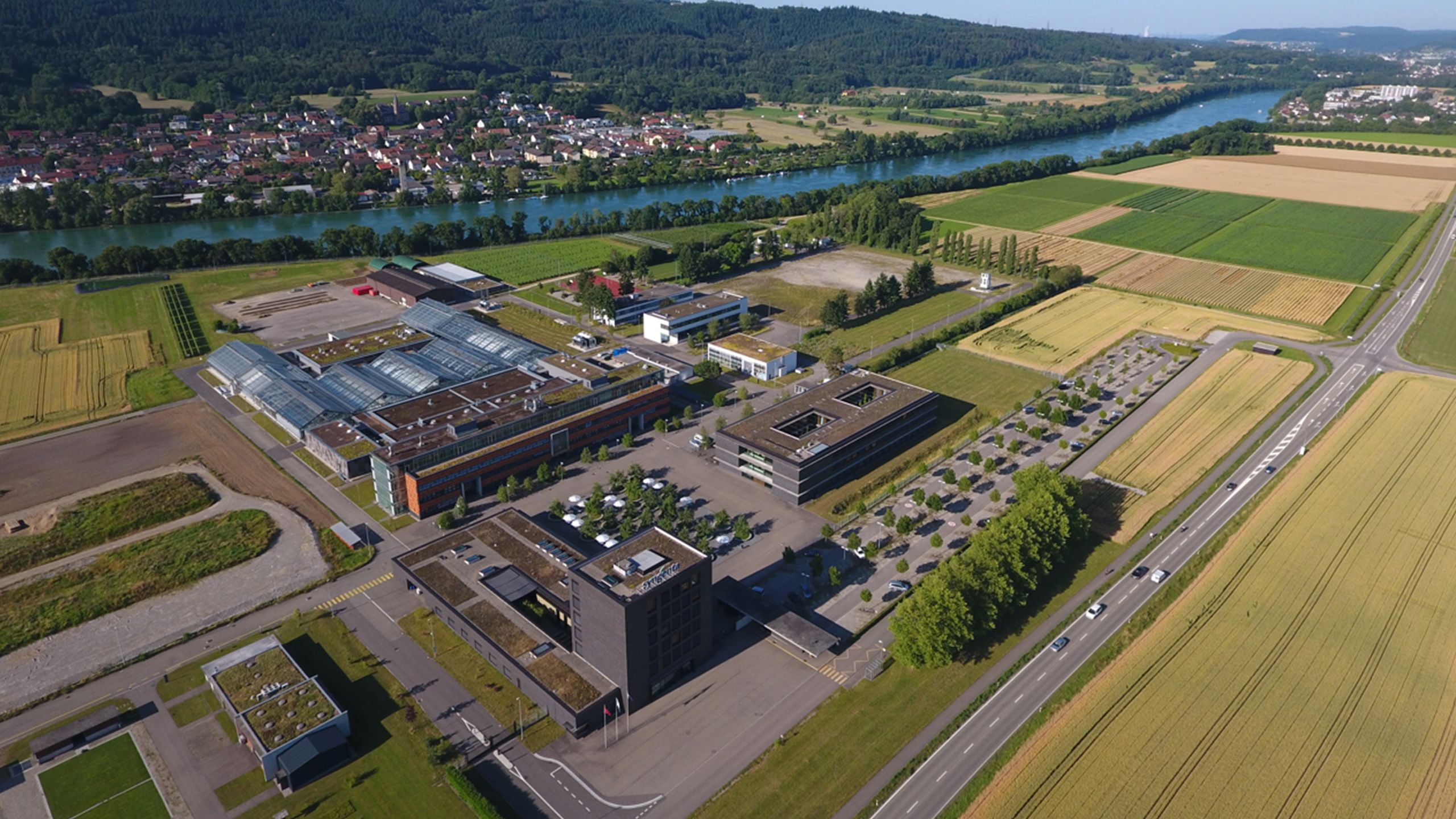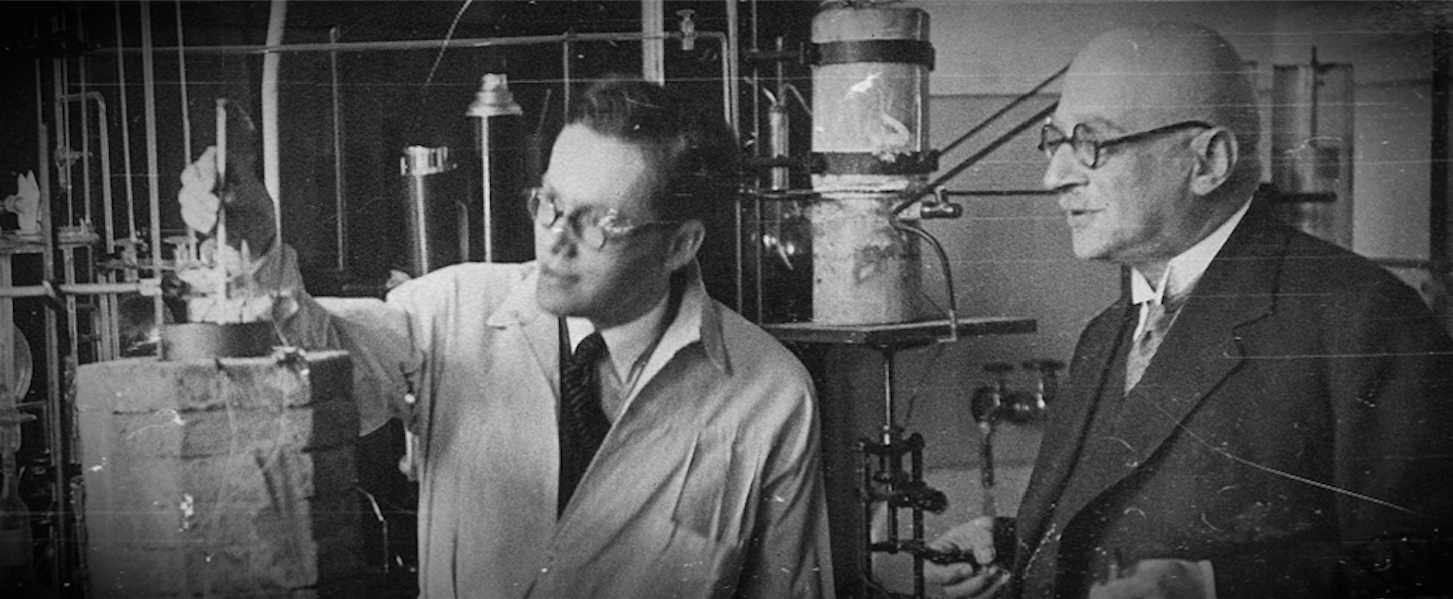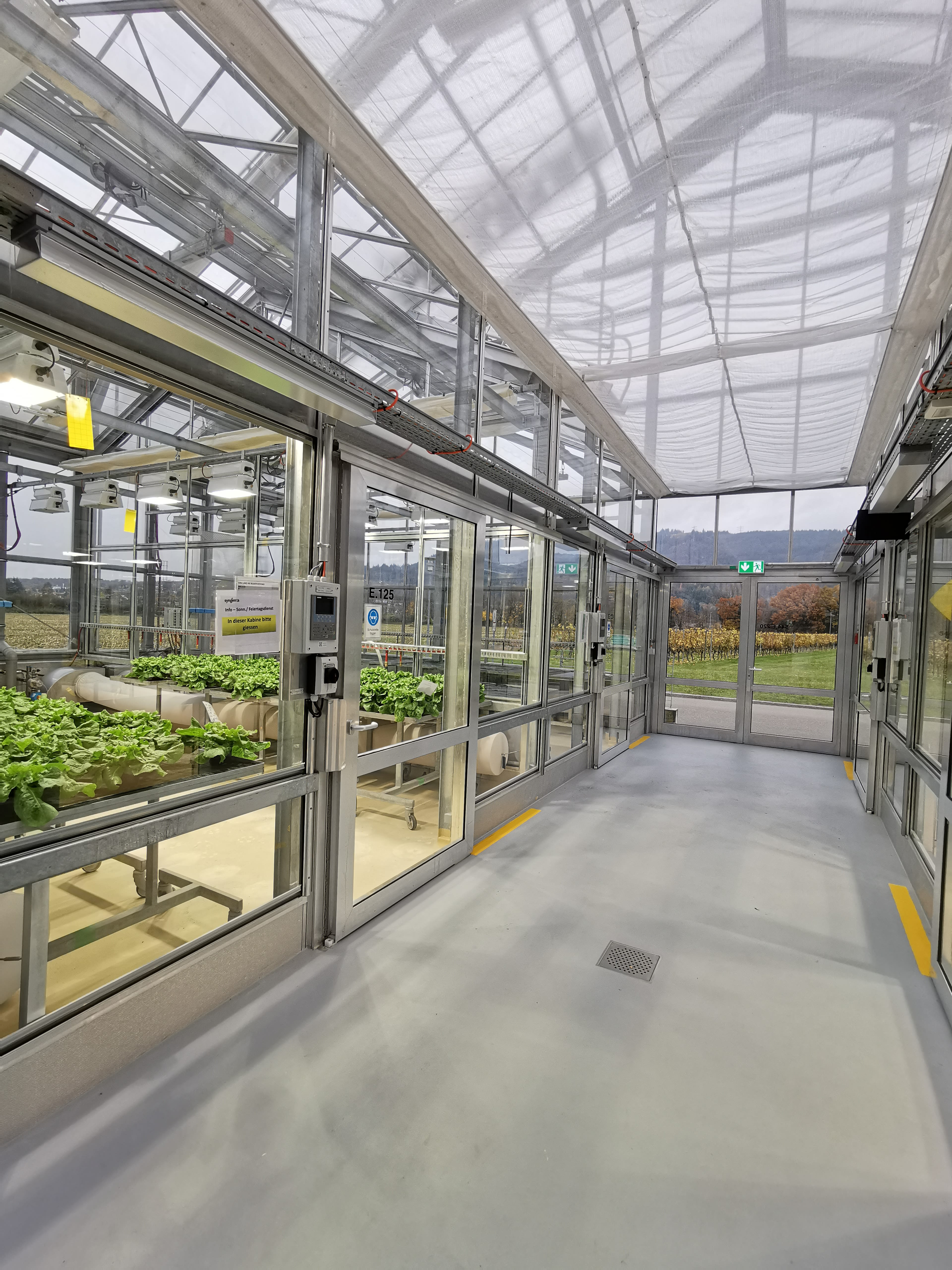A holistic approach to unlocking soil science
Digging into soil science - part two
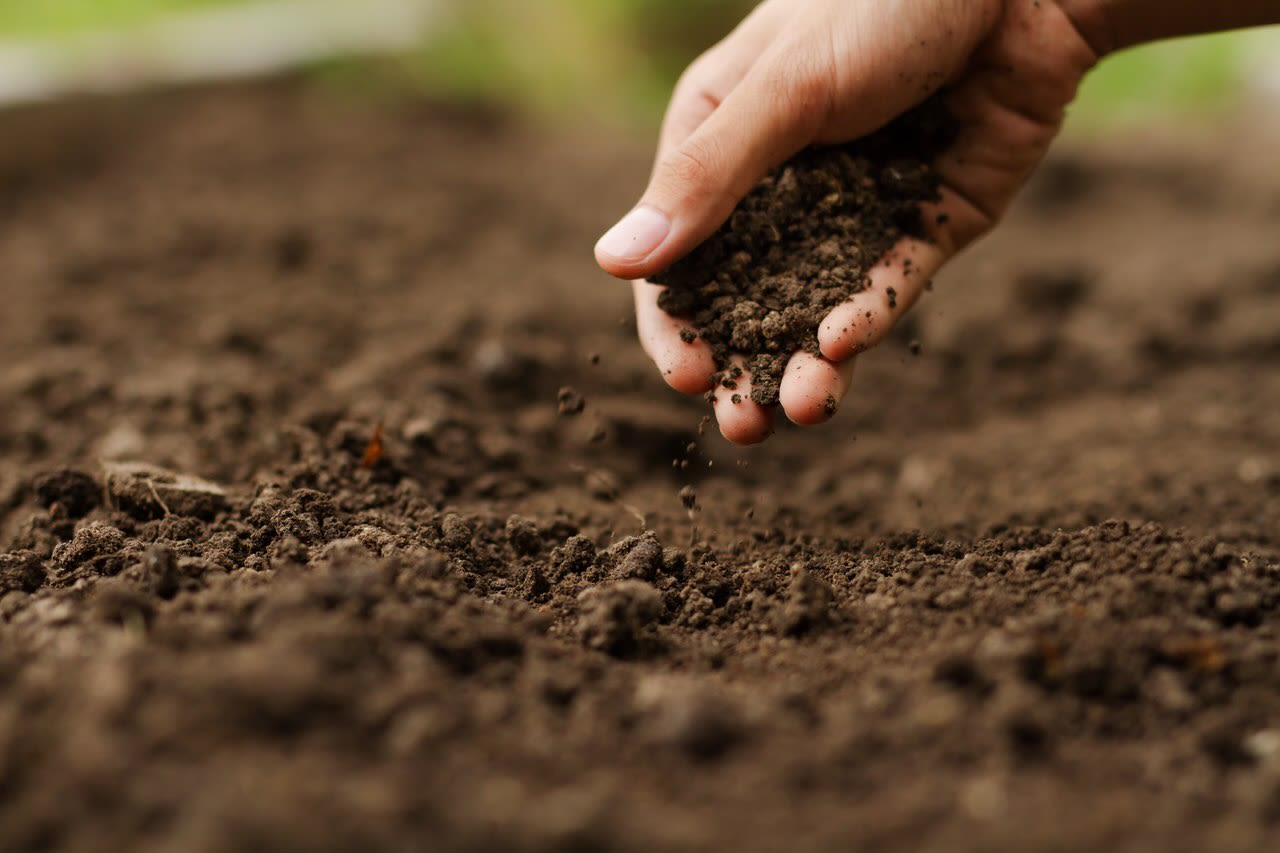
“Behind every story is people,” says Claudio Screpanti as he welcomes a group of visitors into his lab at the Syngenta Group’s Soil Health Research Center. “These are the people.”
He smiles at three scientists nearby who are methodically sorting through soil trays and portioning small amounts into carefully labeled testing tubes.
The center is part of Syngenta Group’s vast Research & Development (R&D) campus in Stein, Switzerland. The campus is a place of calm, methodical excellence. Nearly one-third of the 380 employees hold PhDs. Their work here includes formulating and assessing some 2,000 chemical compounds every month.
It’s all part of Syngenta Group’s work to ensure that Earth’s most precious resource, the soil on which all life depends, can meet the needs of the world’s farmers — even as the global population continues to expand and as climate change makes agriculture ever more challenging. Many of the coming soil innovations for farmers will begin right here in the Stein R&D center.
Aerial view of Syngenta's R&D facility at Stein, Switzerland.
Aerial view of Syngenta's R&D facility at Stein, Switzerland.
The campus, a half-hour drive from Syngenta Group headquarters in Basel, Switzerland, is sleek and modern but somehow not at odds with the quiet, fairytale-like Swiss town it sits in. The neighborhood includes a factory of the pharmaceutical giant Novartis, the pharma supplier Lonza’s Stein site and the power plant of an energy service provider, GETEC.
But only a 15-minute walk away, along open fields, is the longest wooden-roofed bridge in Europe. It was built more than 300 years ago and stretches some 200 meters or so across the Rhine River, connecting Germany to Switzerland. The setting is in keeping with the history of Syngenta itself, which traces its roots to a company founded in Basel in the mid-18th century.
Soil as data
And Syngenta’s Stein capabilities are in keeping with a company that invests $1.4 billion in R&D each year globally. In addition to the campus’ specialized chemistry and biology research labs are a network of more than 100 controlled testing rooms, greenhouse spaces large enough to fit more than 13 professional basketball courts and the Soil Health Research Center, led by Screpanti, a Syngenta Senior Fellow.
The doors of the soil health research center open onto an experimental crop field trial, where corn leaves sway gently in the sunshine. Behind them, an autonomous lawn mower silently maintains one of the campus’ many green spaces.
Inside the lab on this summer morning, Screpanti and his team are measuring the yields of plants grown in specific soil conditions and then testing that soil.
Agronomy is literally a hands-on science. The researchers are analyzing soil as data. They’re measuring the changes that the team’s tiny chemical tinkerings may have had on crop yields as well as the soil microbiome — the complex community of microorganisms that have everything to do with how well, or not, a plant grows.
For all the scientific expertise of this research, outcomes can be hard to measure. And the results aren’t evident quickly. In some cases, the necessary experiments can take months to evaluate.
Nor is bringing a new product to market fast, easy or straightforward. The techniques and the active ingredients in Syngenta’s most effective products can take a decade to develop, even with the efficiencies of the company’s R&D machine.
Soil science, in other words, requires time and perseverance. And yet, Screpanti says he’s been heartened to see a shift over the past decade as Syngenta Group and the agriculture industry make soil health a priority. Recognizing that “soil is the foundation of food,” he says, has unlocked greater investment into research to nurture and restore the living ecosystem beneath our feet.
The benefits to farmers will be higher yields of healthier crops with less degradation of their land. “We feel that we can have an impact,’’ Screpanti says, “and this is a great motivation.”
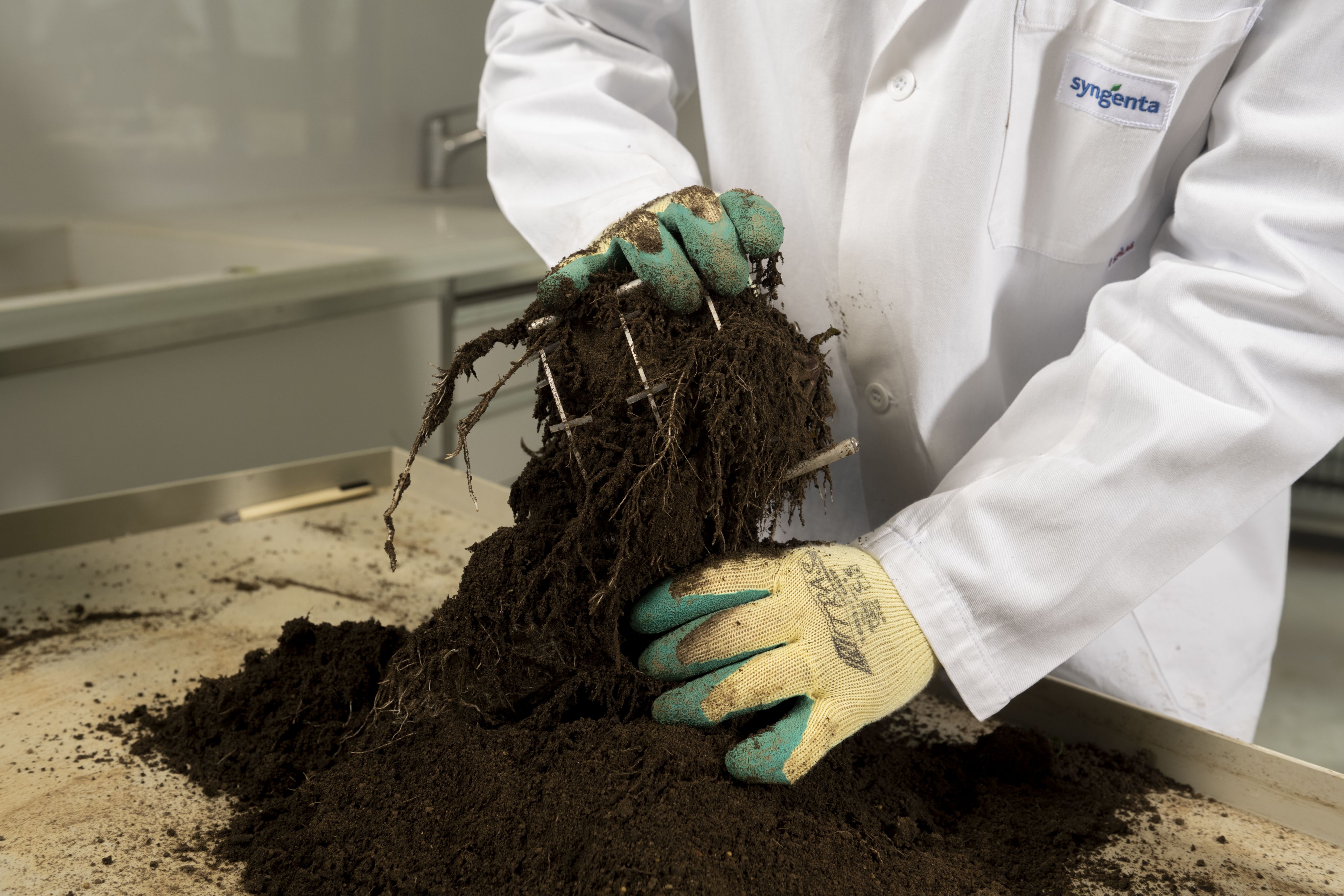
Turning knowledge into tools
Although Screpanti says the past 20 years have seen a “blooming of new approaches and technologies” in soil science, there remain many unknowns yet to be discovered in the complex living ecosystem beneath our feet.
“We need to be humble in the sense that we embrace this challenge,’’ he says, “but we need to acknowledge that there is still a lot to understand and learn.”
While academia drove the initial interest in soil health research, Screpanti says, it’s at labs like this one where that knowledge is sharpened into practical tools for farmers. “For us, it is not just about doing science for science’s sake, but to try to use this learning to address a practical problem.”
If soil is the foundation of food, then nitrogen offers an example of problem solving in action. “Without nitrogen,” he says, “we know that more than 40 percent of the world’s population could not be fed.”
Fritz Haber and Carl Bosch.
Fritz Haber and Carl Bosch.
Indeed, the growth of the global population over the past century can be largely attributed to the early 20th-century work of two German chemists, Fritz Haber and Carl Bosch. They developed a way to transform nitrogen in the air into fertilizer, using what became known as the Haber-Bosch process.
It’s hard to overestimate the impact nitrogen has had on our ability to feed the world. But it’s also difficult to overstate the environmental damage that its heavy use has caused.
Nitrogen is critical to crop growth and reproduction. When farmers harvest their crops, much of the nitrogen that would fuel the next rotation is pulled from the soil. Extensive plowing ahead of the next crop also degrades the soil and its microbiome.
And so, farmers tend to apply chemical nitrogen fertilizer to their crops to secure higher and more stable yields.
Once nitrogen fertilizer is added to the soil, a wide range of microbial processes can change the nitrogen form, making it more or less available to the crops. But because of the tendency in conventional agriculture to blanket a field with fertilizer, much of the nitrogen that is applied to soils leaches into waterways or the air, degrading the environment and contributing in various ways to climate change.
(Industrial production of nitrogen fertilizer is energy intensive in its own right, releasing high carbon emissions when fossil fuels provide that energy.)
Syngenta scientist testing soil. Stein, Switzerland.
Syngenta scientist testing soil. Stein, Switzerland.
In recent decades, soil scientists and agronomists have learned much more about the nitrogen process in soil and plants. Rapid, efficient and reliable new molecular-based research methods have emerged alongside the new, emerging discipline of microbial ecology. Armed with that knowledge, Screpanti’s team then try to find solutions for farmers, devising more intelligent, efficient ways to manage nitrogen and nitrogen use.
“In the past, the agrochemical industry neglected the potential role of small molecules as critical chemical signals to modulate the nitrogen cycle in soil,” he says. “In recent years, Syngenta has put more emphasis on this area.”
And under Screpanti’s leadership, the Soil Health Center has become a key part of Syngenta’s renewed investment in soil health, says Matthew Wallenstein, the company’s Chief Soil Scientist.
“Their work,” he says, “is critical to translating advances in soil and microbiome science into solutions to farmer challenges.”
Perseverance is a product of the seasons
To monitor the impact of nitrogen inputs on the Soil Health Research Center’s test crops of corn, Screpanti walks his visitors along the experimental plots – 32 in total, each containing approximately 30 plants.
As he strolls, he points to various individual plants and notes each one’s likely nitrogen dosage, based on its size and health. (The precise treatment of each plant is recorded back in the lab.)
Experiments like this take time. These crops have required months to grow, and the trials are designed in such a way that certain inputs are added at specified intervals.
And so, in many ways, the scientists operate on the same seasonal timetable as the growers they seek to help. As with farms, the test crops can be subject to unpredictable weather conditions. And the center’s crops require the same meticulous care and deliberate choices about what treatments to add along the way that farmers practice each growing season in hopes of a successful, high-yield crop.
Even though Screpanti’s lab uses considerable computational resources, including AI and machine learning, he notes that his scientists, like the farmers they support, depend on the human element of staying attuned to nature and its vicissitudes.
“The most important tool,’’ he says, “is still observation and how you design the experiment.”
Syngenta Soil Health Research Center, Stein, Switzerland.
Syngenta Soil Health Research Center, Stein, Switzerland.
A long-term perspective
Researchers often measure their ambitions in decades, laying the groundwork today for something that might come to fruition only many years out.
“Our job is to prepare for the future,” Screpanti says. “And then to drive innovation through great and responsible science.”
Farmers, too, play the long game with soil health. Around the world, more and more of them are adopting soil-enhancing regenerative agriculture techniques that include crop diversity and the use of cover crops, as well as no-till or low-till cultivation to restore the soil and improve crop health and yield. In parallel, Screpanti’s team is on a continuous research journey to better understand the processes that can restore or protect soil and then to share this knowledge with farmers.
Farmer holding and monitoring soil health in field.
Farmer holding and monitoring soil health in field.
“We embrace a holistic approach by looking at the science of plant growth, the interactions with the soil microbiome in combination with new diagnostic tools,” he says. “This is the foundation of developing products and service offerings that impact soil health.”
The approach is indicative of Syngenta Group’s renewed focus on the life cycle of its products and their effects on the environment.
Screpanti cites the company’s TYMIRIUM® technology, the nematicide and fungicide, as an example of the center’s work. His team was among the first to research the product’s benefits for soil health. The technology deters soil-borne diseases and nematodes – parasitic microscopic worms – without damaging beneficial ones.
The Soil Health Research Center uses ecological approaches, or the interaction between organisms in the soil and their physical and chemical environments.
As an example, their work focuses on symbiotic microorganisms in the soil, such as the fungus mycorrhizae. These are very important organisms which establish positive interactions with plants, help them to thrive and support soil biodiversity.
“We successfully demonstrated that our nematicide doesn’t harm this important fungus in a wide range of experimental lab and outdoor conditions,” Screpanti says.
This kind of work requires investment in the scientists, their work and their facilities, says Syngenta’s Head of Crop Protection Research, Camilla Corsi.
Camilla Corsi, Syngenta's Head of Crop Protection Research.
Camilla Corsi, Syngenta's Head of Crop Protection Research.
Corsi, who strongly backed the founding of the Stein Soil Health Research Center, says the significant resources Syngenta is pouring into soil health reflects its long-term commitment to this precious resource.
"Understanding soil health, how the complex microbiome interacts with different crops and crop protection products, and helping growers find ways to restore degraded land, are all vital activities to making agriculture more sustainable," she says.
"The practical soil health solutions and expert advice that we can offer to support growers is possible thanks to the hard work of our dedicated scientists and agronomists and their collaboration with colleagues and partners around the world, including here in Stein.”
Taking the broad view

Screpanti notes the continuing challenges, and excitement, around his team’s work.
“When you talk about soil and soil health, it’s quite easy to capture the general concept behind it,” he says. “But when you really want to drill down into the topic, it is very difficult, because it’s so complex. At the first step, you need to have more holistic view, so that people will start to look at the problem in a more open way.”
He acknowledges that the approach may run counter to many other scientific disciplines, which tend to involve increasing specialization. But he says the big picture is key to how his team views its work. “We start this with the work culture, where people are more comfortable to talk about this topic in a very interdisciplinary way.”
Screpanti has a PhD in agronomy from the University of Bologna, Italy, and has done additional study of molecular biology and genetic engineering at the University of Louvain-la-Neuve in Belgium. He’s been with the company for almost 20 years and is now a Syngenta Senior Fellow – a company title awarded to less than 0.1% of scientists within the R&D organization – in recognition of his outstanding scientific achievements.
He regularly contributes to academic research on soil health and chemical innovations for sustainable agriculture.
And this passion for agronomy and science comes from what Screpanti calls the 3 I’s: being Inspired, Inquisitive and Impactful.
“Nurturing an inquisitive mind is the fire feeding my passion to continue to learn and discover the world around us,” he says. “Being impactful means I have the privilege to work for the one of the leading companies in agriculture, and I strongly believe in responsible science.”
The inspiration part?
“I have the chance to interact with other people who share a similar vision. And this is a little bit contagious, we can catalyze new ideas,” he says. “There is a new generation of scientists joining our company, and what do we try to do at the Soil Health Center is to train them to unleash their potential and to be innovative.”
🌱 Unlocking the Secrets of Soil: Syngenta's Cutting-Edge Approach to Sustainable Agriculture


